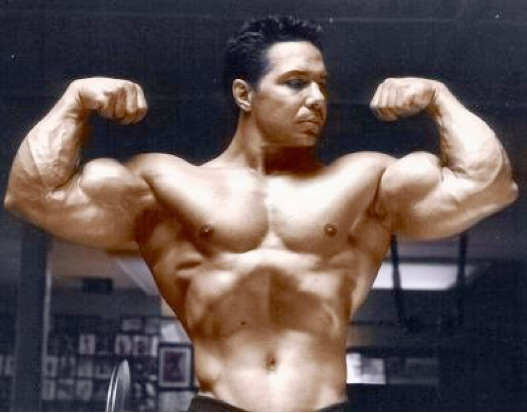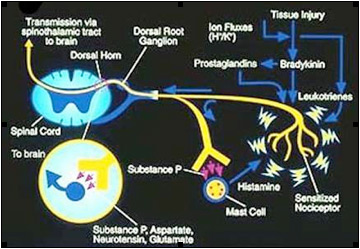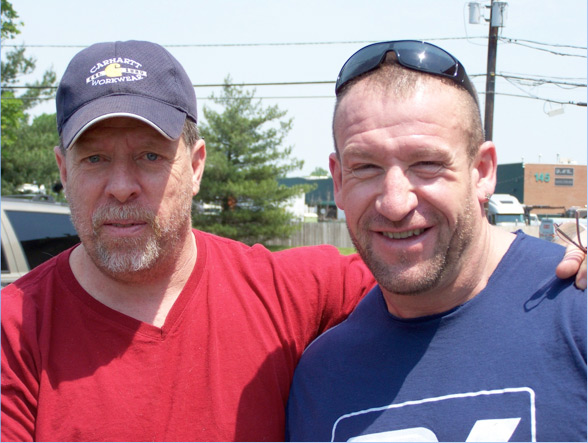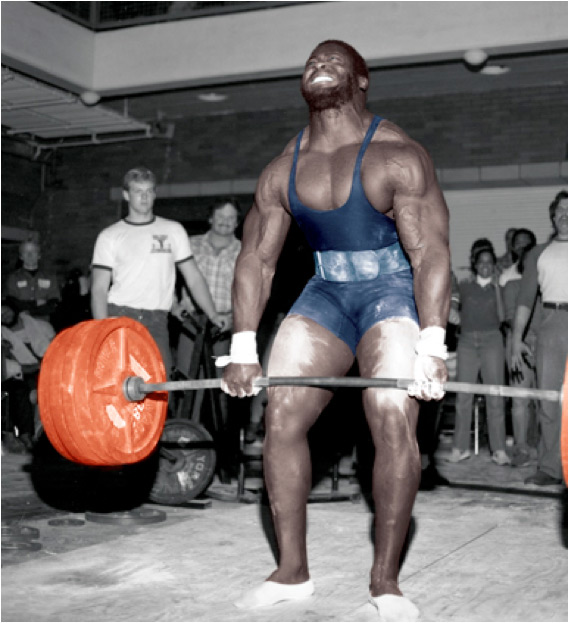
Mighty Endorphins
In white-hot pursuit of the exercise-induced pleasure threshold
"In my experience there are two types of elite bodybuilders: those that love to train and those that don't. A man can be good at something - even great at something - but not necessarily like or love the pursuit or thing he excels at. I have seen this phenomenon in bodybuilding repeatedly. Men that win titles and fame that don't really like to train. These men are motivated by the fame, the adulation, the attention and the financial benefits. When they retire they quit training.
On the other hand you have those that love to train; they love the methodical nature of progressive resistance training; they love the physical and emotional effects of an intense training session; they love the camaraderie of training with like-minded training partners and they love every aspect associated with ‘putting in the work.' This type never quit, never give up and as a result they live longer and are healthier and tend to be far more psychologically balanced."
Bill Pearl
"My theory is that it's the endorphins that keep us coming back for more…"
JAs we've indicated previously, the single most overlooked aspect in triggering an utter and complete physical transformation is readjusting the mindset of the trainee as it relates to the transformational process. Unless the individual finds a way to derive intense pleasure from all aspects of "the process," as Iron Icon Bill Pearl mysteriously calls it adherence and success become problematic. Those able to love the training and the disciplined eating are those that succeed. Learning to love the process is multilayered and complex: there is the physical adherence and psychological adherence; there is instantaneous gratification and delayed gratification; there is the pleasure of taste and the pleasurable physical sensation that accompanies intense physical exercise. The Brain Train journey begins by examining the pleasure associated with extreme physical effort.
Another widely publicized effect of endorphin production is the so-called "runner's high" Which is said to occur when strenuous exercise takes a person over a threshold that activates endorphin production. Endorphins are released during long, continuous workouts when the level of intensity rises from moderate to intense. To generate an endorphin release, the person needs to go past his or her body's physical limit. Endorphins ("endogenous morphine") are endogenous opioid peptides that function as neurotransmitters. They are produced by the pituitary gland and the hypothalamus and in vertebrates during exercise. Endorphins are released in conjunction with excitement, pain, spicy food, hot love, orgasm and killer training sessions. Endorphins are opiates; their ability to produce analgesia generates a feeling of well-being. The actual word, endorphin, has two parts: endo- and -orphin; short for endogenous and morphine, literally means "a morphine-like substance originating from within the body."

Endorphin schematic: unavailable to the low-pain-tolerance slacker or under-trainer
Endorphin Addicts: Gallagher & Yates, 2010
Intense progressive resistance training is an endorphin stimulator without peer. Cardio done with great intensity also triggers the release of endorphins. Any elite athlete knows the feeling of intense well-being and satisfaction that accompanies a brutal workout. My pet theory is the elite are endorphin addicts. The Mighty Endorphins are what keep the elite coming back for more.

Marty and Dorian 2010: Yates, 6-time Mr. Olympia, is a training genius and a complete Purposeful Primitive. Both his training and nutrition have a decidedly British, matter-of-fact simplicity about them. He trains like a powerlifter that uses forced reps. He eats sensibly and has a lot of latitude, compared to his zealot bodybuilder brethren. Yates is a serious student of training strategies and tactics; he loves the process and knows all about the endorphin rush that accompanies bone-crushing poundage. His approach towards nutrition is refreshing: he includes beef and bagels and fruit into his diet. He never dropped below 3,500 calories (hardly starvation) even in the final days leading up to another Mr. Olympia win. His seminars were reaffirmations of the ultra-basics: no magic or hidden rabbit secrets here; straight ahead advice that was unvarnished and always the unbiased cold truth.

This photo of immortal power God John Gamble, (circa 1985) expresses and exemplifies everything mighty and righteous about Old School powerlifting. John is shown ratcheting into place one of his numerous 825-840 pound deadlifts. He would routinely pull this big AFTER having squatted 881 and benched 580 in a t-shirt. John would open his deadlifts at say 788, leap to 820, crush it, and then give 840 + a ride. In his day, in his class, he was unbeatable. Look at the physique: lean and chiseled, weighing 275 standing 5-10. He'd routinely drop 20 pounds in the final 24 hours leading up to a competition. Gamble exemplified the benefits of hardcore progressive resistance. He was truly a Man amongst men. Gamble was an all-around great athlete.
About the Author
As an athlete Marty Gallagher is a national and world champion in Olympic lifting and powerlifting. He was a world champion team coach in 1991 and coached Black's Gym to five national team titles. He's also coached some of the strongest men on the planet including Kirk Karwoski when he completed his world record 1,003 lb. squat. Today he teaches the US Secret Service and Tier 1 Spec Ops on how to maximize their strength in minimal time. As a writer since 1978 he’s written for Powerlifting USA, Milo, Flex Magazine, Muscle & Fitness, Prime Fitness, Washington Post, Dragon Door and now IRON COMPANY. He’s also the author of numerous books including Purposeful Primitive, Strong Medicine, Ed Coan’s book “Coan, The Man, the Myth, the Method" and numerous others. Read the Marty Gallagher biography here.

